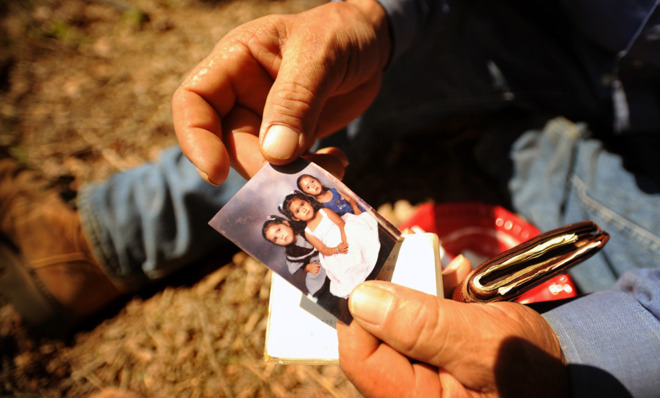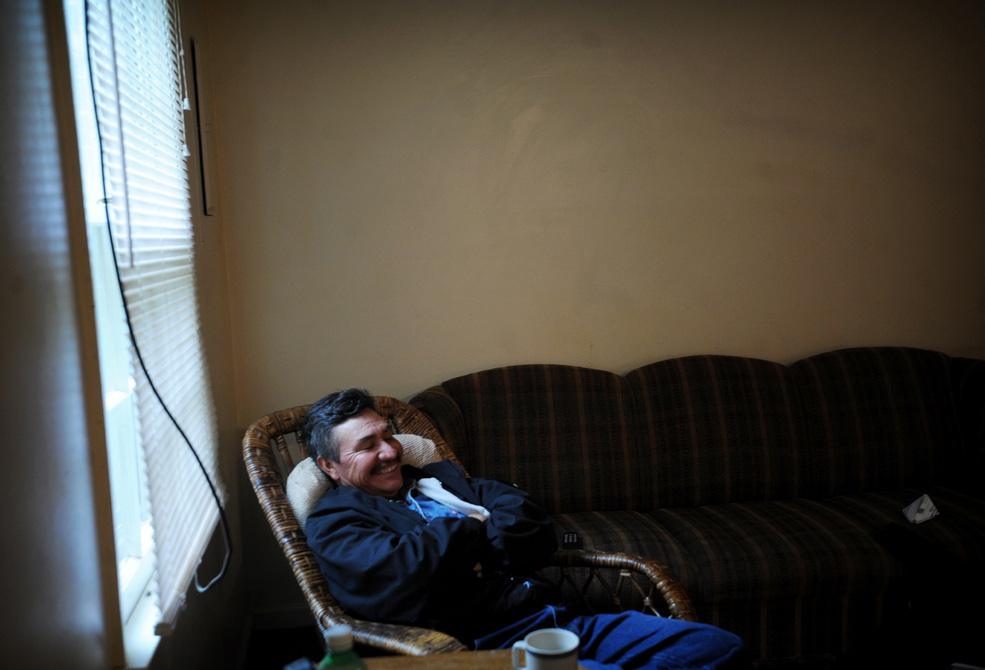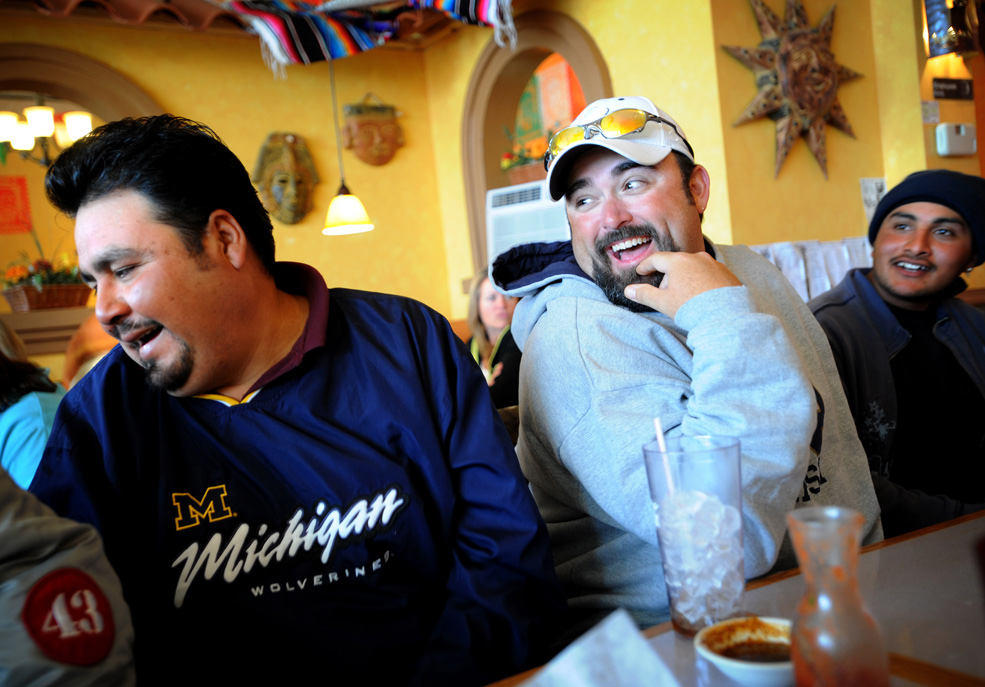Life as a seasonal worker
An intimate photojournalism project sheds light on the lives behind a politically divisive issue


In the early 2000s, Martin and Ramon Alvarez Avalos were living in a small town near Guanajuato, Mexico, precariously hanging onto lower-middle-class status. Ramon's daughter had just started college, putting an even tougher strain on the family.
Meanwhile, more than 3,000 miles north, in Forest, Va., David St. John was desperately trying to woo workers to join his construction company, Mays Bros, Inc. But it was summer and no one would bite.

St. John decided to look outside the U.S. for help, using the H-2B federal guest worker program. It was through that temporary non-agricultural work program that St. John hired the Avalos brothers, along with others, to legally work in America for an eight-month stint. They would make $8.20 an hour.
The Week
Escape your echo chamber. Get the facts behind the news, plus analysis from multiple perspectives.

Sign up for The Week's Free Newsletters
From our morning news briefing to a weekly Good News Newsletter, get the best of The Week delivered directly to your inbox.
From our morning news briefing to a weekly Good News Newsletter, get the best of The Week delivered directly to your inbox.

St. John was so impressed by the workers that he continued to utilize the program each year. And by 2008, Martin and Ramon weren't the only members of their family making the trek north. Along came a second cousin, another brother, and one of the sister's husbands, all looking to save money to send back to their families in Mexico.
Photographer Kim Raff also joined this hard-working crew.
Raff was on staff at the time with The News & Advance, a paper in Lynchburg, Va. She was assigned to cover the program because St. John had attempted to gain a permit to build townhouses for his workers, on land he owned, but the town was pushing back. Most of the workers did not have driver's licenses, and it made the beginning and end of each workday even longer, with chauffeuring duties added to the construction ones.

"This was in suburban Virginia, a pretty affluent area," Raff told me during a phone interview. "People were building McMansions, and, frankly, they didn't want these Mexicans living in the area."
A free daily email with the biggest news stories of the day – and the best features from TheWeek.com
The city council vetoed St. John's permit, on the grounds that the townhouses wouldn't fit the neighborhood's aesthetic.
"I think that's why St. John was so positive about our documenting these guys for a season," Raff says. "He really respected what they were doing, he believed in the program."


Raff began spending several days each week with the workers, first at the work sites, and later in their living quarters. Between the language barrier and townhouse fallout, gaining the workers' trust took some time, Raff says.
"At first, I think they were a little bit uncomfortable with this young woman who just kept showing up and wanting to hang out and photograph them," Raff says. "They'd ask, 'When's this story coming out?' not really getting that it was a longer project."
"I think the country's outlook is changing toward a more open-minded approach about immigration," Raff adds. "But at this time, even four, five years ago, there was so much of that, 'Oh, here come these people, taking Americans' jobs.'"


Raff's breakthrough came on a rainy afternoon when she visited the brothers' apartment. She knew a fair amount of Spanish, but asked Ramon to quiz her. He touched his nose: "La nariz."
Then, laughing, his elbow. Next, his cheek. Raff had set down the camera and was laughing, too.
"We were just people, then, connecting," Raff says. "After that, I don't think they saw me so much as a 'newspaper lady,' they also saw me as a person."

It wasn't just the brothers' perception of Raff that was changing either. The photographer found her own opinions about immigration shifting as well.
Raff witnessed the men living in cramped, dormitory-like quarters — the better to save even more money to send home. She saw them working day in and day out, with few moments of respite and even fewer familiar comforts.
"Think about it: They're living away from their entire family, like six people to each apartment, they don't have much in the way of a social life outside of work," Raff says.


St. John has since had to cut back on the number of temporary workers he hires through the program. As the American economy continued to spiral, his business just couldn't afford to bring so many men up north.
"It's construction, there just wasn't as much business," Raff says.
Raff didn't return to Mays Bros. after the 2008 season either. But the photographer has fond memories of the eight-month project that helped her look at an oft-argued issue in a new light.
"I didn't know much about the H-2B process, but I learned that it's not just, 'Oh, let's go find cheap labor in Mexico,'" she says. "This isn't something they do on a whim. It's a sacrifice they each decided to make."

Sarah Eberspacher is an associate editor at TheWeek.com. She has previously worked as a sports reporter at The Livingston County Daily Press & Argus and The Arizona Republic. She graduated from Northwestern University's Medill School of Journalism.
-
 Political cartoons for December 6
Political cartoons for December 6Cartoons Saturday’s political cartoons include a pardon for Hernandez, word of the year, and more
-
 Pakistan: Trump’s ‘favourite field marshal’ takes charge
Pakistan: Trump’s ‘favourite field marshal’ takes chargeIn the Spotlight Asim Munir’s control over all three branches of Pakistan’s military gives him ‘sweeping powers’ – and almost unlimited freedom to use them
-
 Codeword: December 6, 2025
Codeword: December 6, 2025The daily codeword puzzle from The Week
